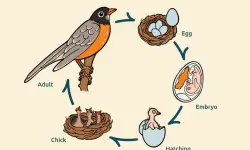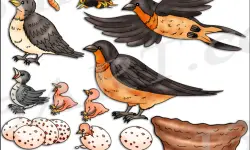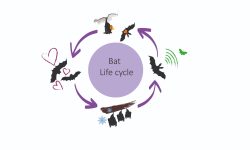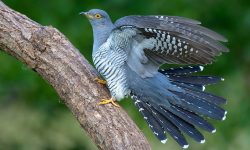Falcons are among the most agile and awe-inspiring birds of prey in the world. Known for their blistering speed, keen vision, and aerial hunting prowess, these raptors thrive in a variety of habitats across North America. This continent is home to several falcon species, each with its own range, behavior, and ecological role. Whether soaring over deserts, coasts, or city skylines, falcons continue to captivate birdwatchers and scientists alike.
What Defines a Falcon?
Speed, Precision, and Adaptability
Falcons belong to the family Falconidae and are known for their pointed wings, rapid wingbeats, and hooked beaks. Unlike hawks and eagles, falcons do not rely on strength alone—they are built for speed and aerial agility. Most falcons kill prey with their beaks rather than their talons, a trait unique to this group of birds.
Global Range, Local Focus
While falcons are found on every continent except Antarctica, North America hosts some of the most iconic species. From the Arctic tundra to the Sonoran Desert, these birds occupy a wide ecological spectrum.
1. Peregrine Falcon (Falco peregrinus)
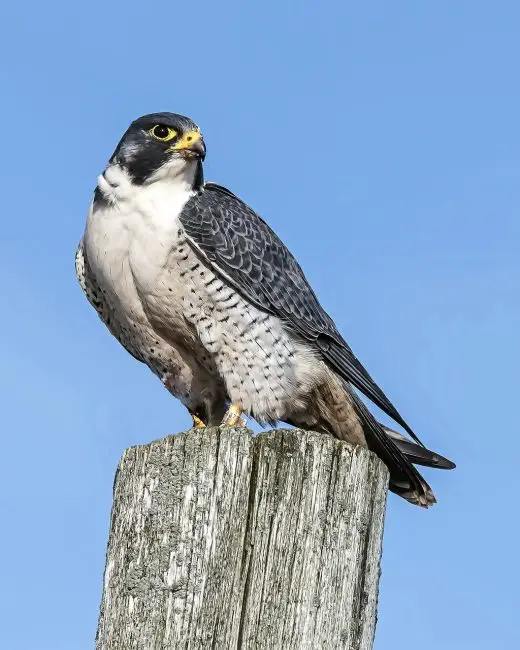
The Fastest Animal on Earth
The Peregrine Falcon holds a world record that no other animal can claim—it’s the fastest creature on the planet. In a hunting stoop, or dive, this falcon can reach speeds exceeding 240 miles per hour (386 km/h), turning its body into a living missile. What makes this feat even more remarkable is the precision involved. Peregrines use acute vision—estimated to be up to eight times sharper than human sight—to lock onto birds mid-flight. With a burst of speed and a calculated strike, they collide with their prey using clenched talons or a quick strike from their notched beak to dispatch it instantly.
This mastery of aerial pursuit has earned the Peregrine Falcon legendary status not only in nature but also in human culture, where it has long been prized in falconry for its intelligence, obedience, and sheer velocity.
A Story of Survival and Urban Reinvention
Just a few decades ago, the Peregrine Falcon teetered on the edge of extinction in North America. Widespread use of DDT caused their eggshells to thin, leading to reproductive failure across much of their range. But thanks to aggressive conservation programs—including captive breeding, release initiatives, and pesticide bans—the species made an extraordinary recovery.
Today, Peregrines are a conservation success story. No longer confined to remote cliffs and highlands, they’ve adapted to modern life by nesting on city skyscrapers, bridges, water towers, and even cathedrals. In places like New York, Chicago, and San Francisco, they’ve become urban predators, preying on pigeons and starlings with the same aerial prowess once seen in the wilderness.
Range and Habitat
The Peregrine Falcon is one of the most cosmopolitan birds of prey in the world. In North America, it can be found from the frozen tundra of northern Canada to the tropical highlands of Mexico. It inhabits a wide array of ecosystems—coastlines, mountains, river valleys, deserts, and cities. Its broad adaptability and powerful migratory instinct make it a true global traveler, with some individuals flying over 15,000 miles annually between breeding and wintering grounds.
2. American Kestrel (Falco sparverius)
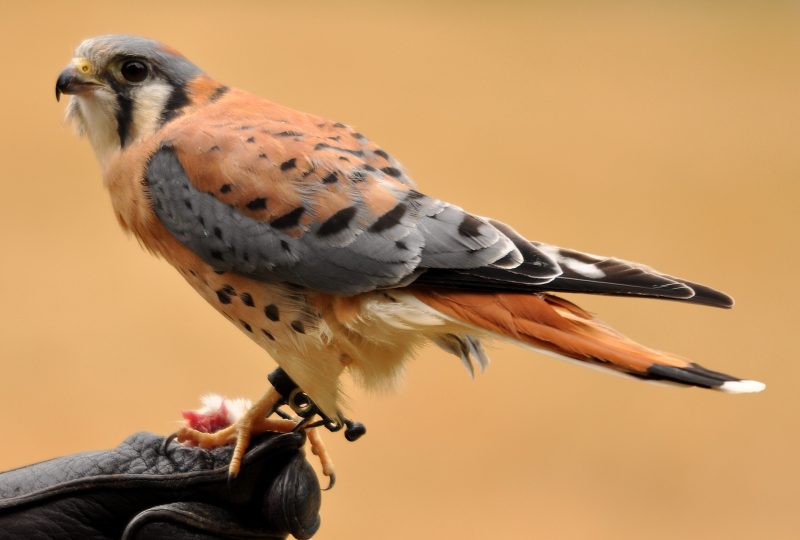
North America’s Pint-Sized Predator
Don’t let its size fool you—the American Kestrel may be North America’s smallest falcon, but it packs a punch far beyond its weight class. Roughly the size of a robin, this compact raptor combines agility, speed, and striking beauty. Males dazzle with slate-blue wings, a rust-colored back, and bold black facial stripes, while females wear more subdued earth tones with rich, rusty barring. This sexual dimorphism—the visual difference between the sexes—is unique among falcons and makes kestrels easy to identify in the field.
These little hunters are often spotted perched on fence posts, utility wires, or the tops of signs along rural roads, scanning the grass below for movement. With a quick flick of their wings, they can launch into a hover—a rare skill among raptors—allowing them to hold position in midair while tracking prey.
Diet and Behavior
American Kestrels are versatile hunters. Their menu includes a wide variety of insects like grasshoppers, dragonflies, and beetles, as well as small rodents, lizards, and songbirds. This dietary flexibility allows them to thrive in diverse environments, from farm fields to suburban parks and deserts.
One of the kestrel’s most fascinating behaviors is hover-hunting. By facing into the wind and flapping rapidly, kestrels can remain nearly stationary in the air while zeroing in on movement below. Once prey is spotted, they drop in a steep dive, grabbing it with their talons in a lightning-fast strike.
American Kestrels are also unique among falcons for their nesting habits. Unlike species that prefer cliffs or ledges, kestrels are cavity nesters, often raising their chicks in tree hollows, rock crevices, or even man-made nest boxes. This adaptability makes them excellent candidates for conservation outreach and urban nesting programs.
Range and Habitat
Widespread across North, Central, and parts of South America, American Kestrels are found in open landscapes—grasslands, deserts, meadows, farmlands, and suburban clearings. They prefer areas with scattered perches and wide visibility for hunting, avoiding dense forests. In colder regions, they migrate south for the winter, but in much of the U.S., they can be seen year-round.
Despite their adaptability, kestrel populations have shown declines in some areas, likely due to habitat loss, pesticide use, and competition for nesting cavities with invasive species like European Starlings. Conservation efforts, including nest box programs, are vital to supporting this vibrant little falcon across its range.
3. Merlin (Falco columbarius)
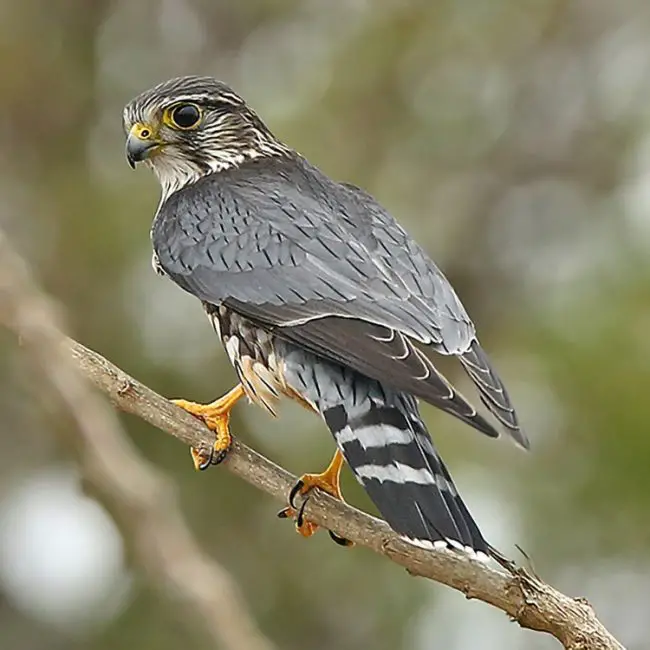
The Compact Pursuit Falcon
Stocky, muscular, and lightning-fast, the Merlin is a true aerial predator built for pursuit. Though smaller than a crow, it carries a presence far larger than its size suggests. Unlike the hovering, perch-hunting kestrel, Merlins rely on raw speed and surprise, launching rapid, twisting chases through the sky in pursuit of small birds. Their flight is powerful and direct, slicing through the air with determination.
These falcons don’t waste time with hovering or soaring. Instead, they often burst from concealment—tree lines, shrubs, or low perches—exploding into the air to ambush prey mid-flight. They’re particularly fond of hunting flocks of songbirds, disrupting the group and picking off one unlucky individual during the confusion.
Merlins are also notably more aggressive and secretive than their falcon relatives. They defend nesting sites with tenacity and can be fierce in territory disputes, sometimes even taking on larger raptors.
Seasonal Shifts and Migration
Merlins are highly migratory. They breed in the boreal forests and open coniferous regions of Canada and the northern U.S., nesting in old crow or hawk nests rather than building their own. Once breeding season ends, they head south—some as far as Central and northern South America, depending on their breeding latitude.
During migration, Merlins become more visible, especially along coastlines, grasslands, and open fields, where they can be seen zipping past like feathered missiles. Unlike the soaring trajectories of hawks, a Merlin’s flight is rapid and low, hugging terrain as it travels in short bursts.
Birders along major flyways often spot Merlins in autumn and spring, and the excitement is real—these raptors are often just a blur of wings and attitude. They may even appear in city parks and fields, especially in winter, as they adapt to a surprising range of open habitats.
Range and Habitat
The Merlin’s range spans North America, Europe, and parts of Asia, making it a truly global falcon. In North America, it’s often found in prairies, tundra edges, open woodlands, and coastal regions, though it avoids heavily forested or mountainous areas.
Three main subspecies occur across North America, varying in size and color. These regional forms reflect their adaptability to different climates and landscapes, from plains to coastlines.
Although not considered threatened, Merlins benefit from protected habitat and careful monitoring, especially in their breeding range, where nesting sites are increasingly disturbed by human activity.
4. Gyrfalcon (Falco rusticolus)
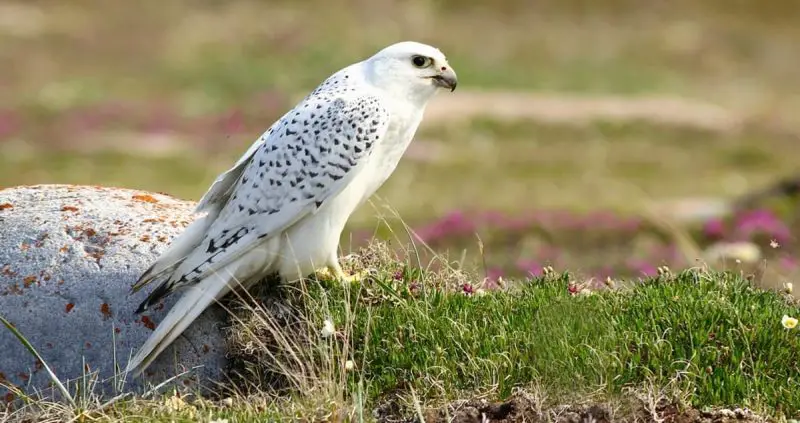
The Arctic Giant
Dominating the icy wilderness, the Gyrfalcon is the largest falcon species in the world—a powerful, broad-winged predator built to rule the cold. Native to the Arctic and sub-Arctic tundra, this formidable raptor hunts in some of the harshest climates on Earth. Its primary prey includes ptarmigan, Arctic hares, and waterfowl, which it captures in explosive chases low over snow and ice.
Unlike more acrobatic falcons that favor aerial dives, the Gyrfalcon uses relentless pursuit and brute speed, often flying just above the ground to ambush prey. Its robust frame, long tail, and muscular build allow it to overpower large animals—even in flight—and hold its own against strong winds and frigid temperatures.
Regal and fierce, the Gyrfalcon has been revered for centuries. In medieval Europe, it was considered the royal bird of kings and emperors, used in falconry for its strength, rarity, and sheer majesty.
Rare but Majestic
Gyrfalcons are year-round residents of the Arctic Circle, nesting on remote cliffs and rock ledges in regions stretching from northern Canada and Alaska to Greenland and Scandinavia. Their nests are often reused for generations and can be incredibly difficult for researchers to access.
In winter, some Gyrfalcons venture south into northern parts of the United States and southern Canada, especially when prey becomes scarce. Birders in places like Montana, the Dakotas, or New England may catch a rare glimpse of this snowy ghost—typically in open habitats such as frozen lakes, agricultural fields, or tundra-like plains.
One of the most striking features of the Gyrfalcon is its range of color morphs. Individuals can be pure white, slate gray, or nearly black, with intermediate forms in between. These morphs do not indicate sex or age but are natural genetic variations, adding to the mystique and beauty of this Arctic raptor.
Range and Habitat
Gyrfalcons are birds of vast, treeless landscapes. They favor Arctic coasts, inland tundra, and open mountainous regions, where their light-colored plumage blends into snow-covered environments. Their hunting strategy and cold-weather resilience make them apex predators in their ecosystem.
Although still relatively uncommon and elusive, the Gyrfalcon population is considered stable, but vulnerable to the impacts of climate change, which alters their icy habitat and prey availability. Conservationists keep a close eye on this majestic falcon as the northern regions it calls home undergo rapid environmental shifts.
5. Prairie Falcon (Falco mexicanus)
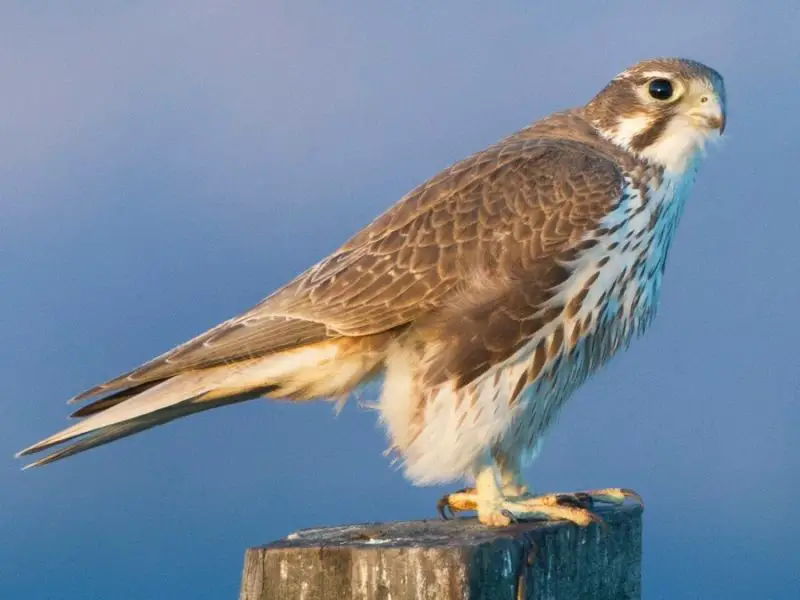
The Western Desert Hunter
Sleek, swift, and built for the open sky, the Prairie Falcon is a true raptor of the American West. Found throughout the arid deserts, sagebrush plains, and high mesas of the western United States and northern Mexico, this agile falcon is a master of long-distance hunting across wide-open spaces. At first glance, it resembles a lighter, dustier version of the Peregrine Falcon, but it’s a species entirely adapted to life in dry, rugged landscapes.
Prairie Falcons rely on speed, surprise, and stamina to catch their prey. Unlike falcons that stoop from great heights, Prairie Falcons often hug the terrain, using ground cover and elevation to sneak up on unsuspecting animals before launching a blistering attack. They can accelerate to incredible speeds in level flight, making them lethal hunters in their sunbaked domain.
Adapted to Harsh Climates
The Prairie Falcon’s life revolves around desert survival. From the sun-scorched Mojave and Sonoran deserts to the windblown Great Basin, this bird thrives where few raptors can. It nests on rocky ledges, canyon walls, and cliff faces, where it lays eggs in shallow scrapes with no added material. These isolated, elevated nesting sites provide safety from predators and a panoramic view of hunting grounds.
Its diet reflects the ecosystem’s diversity. Prairie Falcons feed on a wide range of prey—ground squirrels, lizards, small birds, jackrabbits, and even insects. In the spring and summer, they may focus on rodents like Belding’s ground squirrels, while in winter, birds make up a larger portion of their diet. They are skilled at adapting their hunting tactics to match seasonal changes in prey availability.
One unique aspect of the Prairie Falcon is the dark “armpit” patch under its wings—visible in flight and helpful for field identification. Its plumage is otherwise sandy brown with lighter underparts, allowing it to blend perfectly into dry rock and grassland habitats.
Range and Habitat
The Prairie Falcon’s range spans much of the western United States and parts of northern Mexico, from eastern Washington and Idaho down through Nevada, Utah, Arizona, New Mexico, and into the high deserts of California and Texas. It prefers open, dry terrain with little forest cover, avoiding dense woodlands or heavily urbanized zones.
Unlike some falcons that migrate long distances, Prairie Falcons are generally non-migratory in the southern parts of their range. Northern populations may move south in winter or descend from higher elevations in search of milder climates and more abundant food.
Though not considered endangered, the Prairie Falcon faces threats from habitat loss, recreational cliff use, and pesticide exposure. Conservation efforts focus on protecting key nesting cliffs and maintaining the health of native prey populations.
Falcon Adaptations and Hunting Techniques
Aerial Speed and Accuracy
Falcons are built for speed. Their streamlined bodies and long, pointed wings reduce drag, allowing them to achieve remarkable velocities. During a stoop, a falcon tucks its wings tightly against its body to become a living missile.
Keen Eyesight
Falcons possess extraordinary vision—up to eight times sharper than human sight. This enables them to spot prey from hundreds of feet in the air and adjust their flight path mid-chase with surgical precision.
Kill with the Beak
Unlike hawks and eagles that use powerful talons to crush prey, falcons dispatch their victims with a specialized tooth-like notch in their beak, known as the “tomial tooth.” It’s an adaptation for quickly breaking the neck or spinal cord of small birds and mammals.
Human Connections and Conservation
Cultural Significance
Falcons have a long history of interaction with humans, especially in the sport of falconry. Revered in ancient cultures and still trained today, falcons represent a blend of wildness and discipline.
Conservation Success Stories
The Peregrine Falcon was nearly wiped out in the 20th century due to the pesticide DDT, which thinned eggshells and led to reproductive failure. After intensive recovery efforts, including captive breeding and reintroduction, the species rebounded and was removed from the U.S. Endangered Species List in 1999—a hallmark conservation success.
Where to Spot Falcons in North America
Urban Cliffs and Natural Landscapes
Today, falcons can be found in diverse habitats. Peregrines nest on skyscrapers in cities like Chicago and New York. Kestrels frequent farmland edges and open fields. Prairie Falcons soar over Nevada’s deserts, while Gyrfalcons haunt the snowy expanses of Alaska and northern Canada.
Best Seasons for Viewing
Fall migration and winter are prime times for falcon watching. Open areas near rivers, coastlines, and grasslands often provide the best chances for sightings.
Conclusion: Agile, Fierce, and Essential
Falcons in North America embody a rare combination of speed, grace, and lethal precision. As hunters, they play a vital role in controlling prey populations and maintaining ecological balance. Their diverse adaptations allow them to thrive in forests, deserts, mountains, and even urban centers. For bird enthusiasts and conservationists alike, falcons remain one of the most thrilling and iconic birds on the continent.

